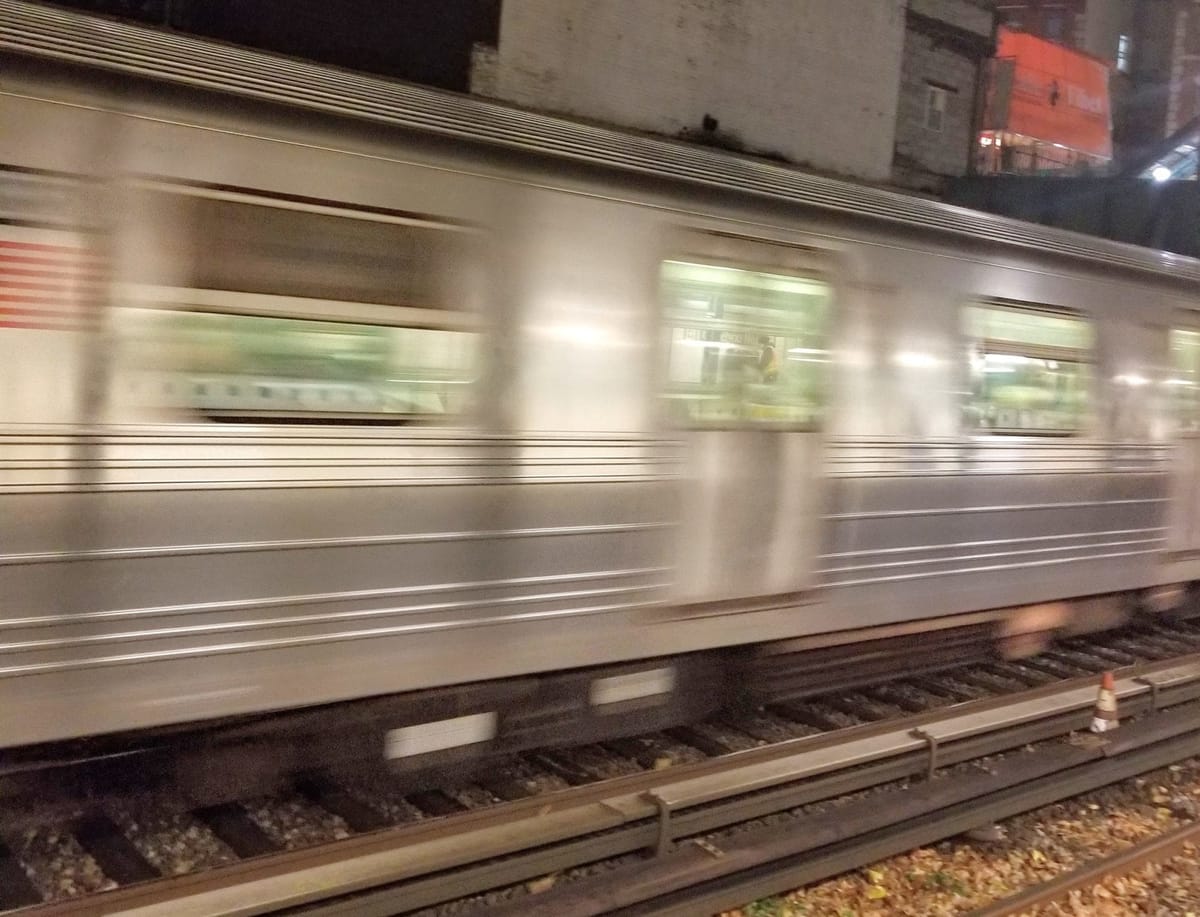Two Passengers Die In A Day As Subway Fatalities Rise Amid Ridership Plunge


By Jose Martinez, Originally published in THE CITY.

A woman died on a Brooklyn subway platform Wednesday after exhibiting what an MTA report describes as “symptoms of COVID-19” — making her the second person to die in the system that morning and the fourth this month.
The 11 deaths in the subway system this year through April 15 reflect an uptick from the same timeframe in 2019, when there were 17 all year. Meanwhile, ridership has plunged 95% to historically low levels during the global pandemic.
“Any death in the subway is tragic,” said Andrei Berman, an MTA spokesperson. “As with people who suffer sudden and severe medical complications anywhere in the city, the causes vary widely.”
Internal incident reports obtained by THE CITY detail the death toll on trains and in stations. The number does not include suicides.
At 11:45 a.m. on Wednesday, transit workers reported a “sick customer” on a platform at the Van Siclen Avenue stop along the No. 3 line in East New York. According to the report, a woman “was vomiting and outstretched on the floor” as police arrived.
Police then requested that all northbound trains skip the station due to “the sick customer having symptoms of COVID-19.”
The Office of the Chief Medical Examiner did not respond to repeated requests from THE CITY for more information on the woman’s death, or other fatalities in the subway system this year. Nor did the NYPD.
‘It’s Tragic’
But the head of Transport Workers Union Local 100, which has lost more than 40 members to COVID-19, called the passenger deaths “disturbing.”
“It’s tragic. It’s also a health hazard,” said Tony Utano, president of TWU Local 100. “We have a permanent population of subway dwellers who are not getting the services they need, and are definitely not washing their hands.”
Earlier Wednesday, an unresponsive male was found onboard a No. 2 train at the line’s 241st Street terminal in The Bronx.
After police and Emergency Medical Service workers were called, a report says an officer “made several attempts to resuscitate the customer, but stated that he was deceased.”
The deaths Wednesday followed two others earlier this month.
On April 2, at 4:20 a.m., a train dispatcher reported a sick customer on an N train at the line’s Ditmars Boulevard terminal. According to an incident report, the man was pronounced dead 20 minutes later.
A day earlier, an incident report shows a man was found dead inside the 168th Street station along the No. 1 line in Manhattan.
Two transit workers are also among the toll of 11 fatalities so far this year.
Train operator Garrett Goble was killed March 27 after a suspicious fire erupted inside a No. 2 train at the Central Park North-110th Street station. Track worker William Wilcox died March 7 at Brooklyn Hospital, an incident report says, after getting sick in the DeKalb Avenue stop.
Struggle to Help Homeless
The incident reports obtained by THE CITY, in most cases, reveal few details about the deceased — including where they lived.
MTA Chief Safety Officer Patrick Warren said that as ridership has all but vanished, the homeless are now “much more visible” in the subway.
“We recognize that there is a challenge out there, a huge citywide challenge, with regards to the homeless,” Warren told THE CITY.
A spokesperson for the city Department of Social Services said outreach teams have worked round-the-clock during the pandemic. In that time, the spokesperson said, workers have referred 12 homeless people for coronavirus testing, but none has tested positive.
Efforts by police and outreach workers often run into resistance, Warren said.
“The answer always… is they don’t feel secure [in city shelters],” he said.
Giselle Routhier, policy director at the Coalition for the Homeless, said those who lack shelter often head into the subway system.
“If there are people dropping dead in the subway, we need to know that and the city needs to act appropriately,” she said.
The subway system still runs around the clock to transport essential workers to their jobs. Trains, however, are operating at longer intervals than usual — leaving many platforms eerily empty at times, riders have said — while making some rush hour trains too crowded for comfort.
On Thursday, Gov. Andrew Cuomo ordered that all people taking public transit must wear a protective mask beginning Friday at 8 p.m.
You MUST wear a face covering or mask:
-On public transportation
-In for-hire vehiclesIf you are a bus/train operator or a driver of a for-hire vehicle, you must also wear a face covering or mask.
These rules go into effect on Friday at 8PM.
— Andrew Cuomo (@NYGovCuomo) April 16, 2020
Overall, 68 MTA employees have died of COVID-19, among them 42 TWU members.




